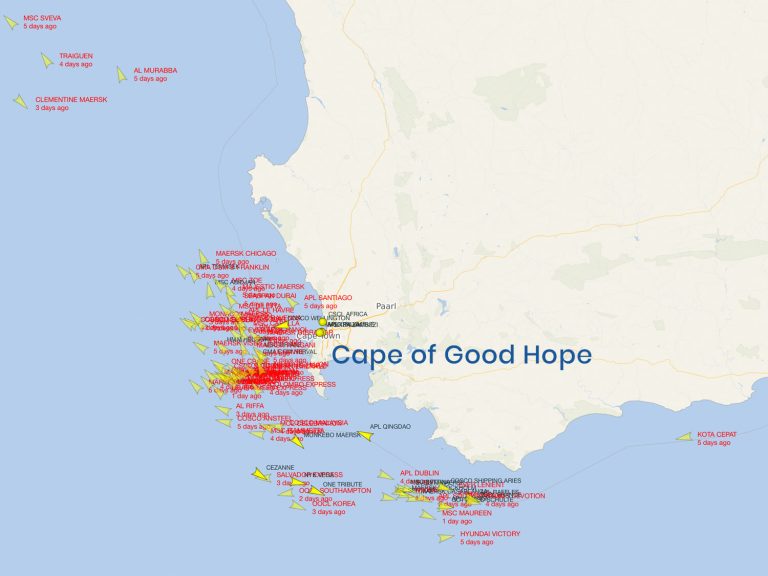
Date:
The real impact of diverting ships round Africa
Following the sharp escalation of attacks on container ships in the Bab-al-Mandeb strait off the coast of Yemen last week, major container shipping lines are diverting vessels around the southern tip of Africa, rendering the Suez routing unavailable for an unknown period.
With the Suez route closed it instantly delayed shipments to Europe and the US East Coast between 5-14 days, which effectively removes two weeks of supply of empty containers going back to the Far East.
While the impact of this action will be felt on multiple trades, its impact will be most profound on traffic from Asia and will be particularly troublesome on the Far East to North America East Coast (NAEC) trade, as there has been a shift towards the Suez routing due to the drought in the Panama Canal, making a reversal to the Panama routing impossible.
Routing around Africa by the Cape of Good Hope increases sailing times considerably, especially for services to the Mediterranean (MED).
Using a standard speed of 17 knots during the deviation, we are looking at a likely increase in transit time of roughly 10 days on Far East-North Europe, 14 days to MED, and 5 days to NAEC.
For a full roundtrip however, additional vessels will need to be injected into services on these trades to maintain a weekly departure.
Using the number of services on the impacted trades, the average vessel size on each service, and an additional vessel for every 7-day increase in sailing time, a switch to round-Africa would require 1.7 Million TEU of vessel capacity, which is around 6% of the total global container vessel capacity (just 4% is currently idled).
Every week there is approximately 390,000 TEU loaded from Europe and USEC going to Far East as a mix off full and empties and having lost two weeks sailing round-Africa 780,000 TEU of containers less will arrive in Far East in time for the beginning of the Chinese New Year peak over the next 4 weeks, which will create shortages in key locations.
The supply/demand crunch is therefore less a matter of ships and more a matter of equipment, which also means that all export trades out of Far East will feel this impact and not just those that usually go through Suez.
We are seeing some 20’ and 40’ GP issues currently ex North China Feeder Ports, but nothing major and issues can be avoided if shippers make their bookings in good time.
We remain hopeful that equipment issues might be worked through the system in the post-CNY lull period.
And that 6% assumes vessels using the Cape of Good Hope are running normally, but in the short term the required capacity injection is actually much larger, as some vessels’ total sailing time will be much longer, either because they were either waiting around for days for instructions, or they were caught in the wrong locations for the diversion.
Part of the current overcapacity problem, caused in large part by new-build deliveries, has been absorbed by slow-steaming, and while this additional capacity could also be absorbed it would require vessels to sail a lot faster and claw back some of the lost transit days.
From a capacity perspective this should not be a disaster in the longer term and while equipment shortages in Asia have not happened yet , it may enter the equation beginning week 4 but from week 5 ish there will be far less export containers to be loaded from China
During week 5 to 8 plenty of equipment will arrive back in time for re-opening factories, so any genuine equipment problem in East Asia will not transpire till early April
We have formed a ‘Red Sea Crisis Task Force’ who are monitoring the ongoing situation, gathering intelligence, speaking with carriers and ensuring that we can share the latest information as the situation continues to develop.
While many of the issues detailed will only be felt and experienced in the coming weeks, we are mindful to share this information now, to support your decision making and to help you prepare for any product movements that are essential.
If you have any questions or concerns about the impact of the Suez situation on your Asia supply chain, or would like to discuss its wider implications, please EMAIL our Chief Commercial Officer, Andy Smith.
